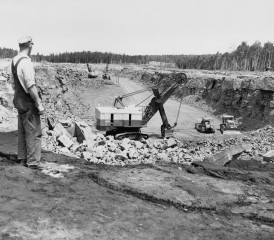Secondary Exposure in Children of Asbestos Workers Pt. 1

The Mesothelioma Center recently received an email from a woman whose family members worked with asbestos when she was a child. After explaining that lung cancer claimed the lives of her father, grandfather and grandmother, she asked if we knew of any research on children who were exposed to asbestos brought home on the clothing of asbestos workers.
Without a doubt, asbestos fibers inadvertently brought home from the workplace can cause serious health complications. This is known as secondary asbestos exposure, and it applies to not only children, but also to spouses, siblings and anyone else sharing the residence.
Before we answer the question, let’s look at secondary exposure and how it affects a child’s health.
How Does Secondary Exposure Occur?
In asbestos-heavy work environments, certain activities can expel toxic fibers into the air. This occurs when asbestos products are cut, sawed, sanded, ground or otherwise disturbed. Aside from the obvious risks of firsthand exposure, suspended asbestos fibers can get distributed through ventilation ducts. They also often penetrate into workers’ clothing.
If these workers fail to take the proper safety precautions, like changing out of their contaminated clothes before returning home from work, for instance, fibers easily can pollute the home. This places children and family members at risk for a number of asbestos-related diseases. Workers can also carry asbestos fibers home with them on their hands, hair, shoes or on tools used at the jobsite.
According to the Occupational Safety and Health Administration (OSHA) and the National Institute for Occupational Safety and Health (NIOSH), there is no safe level of exposure to asbestos. A joint study by these organizations confirms that significant disease can occur even after brief or intermittent periods of exposure.
Medical Research on Childhood Exposure
A survey of the medical literature examining secondhand asbestos exposure among children shows that researchers still have much to uncover. Although a wealth of journal articles involving dozens of countries describe the repercussions of indirect asbestos exposure for children, the answers to many crucial questions are speculative and have yet to be proved.
What we do know is that household exposure to asbestos puts children at risk for a myriad of conditions that doctors once thought only affected occupationally exposed workers. In a comprehensive 1995 report to Congress outlining the health effects of household contamination, NIOSH reported that the families of asbestos workers have been at increased risk of lung cancer, asbestosis, all major types of mesothelioma, cancers of the gastrointestinal tract and ovaries and a number of non-cancerous lung abnormalities.
Initial studies investigating the dangers of asbestos were confined to occupational exposures within the asbestos mining and production industries. In one of the earliest studies on the dangers of indirect exposure, Newhouse and Thompson asserted in 1965 that “there seems little doubt that the risk of mesothelioma may arise from both occupational and domestic exposures to asbestos.”
This finding paved the way for numerous other studies aimed at accurately gauging the health risks of secondary exposure.
A great number of these studies cite the laundering of asbestos-contaminated clothing as a highly plausible pathway for indirect exposure. In many cases, the wives of asbestos workers regularly washed their husbands’ dirty work clothes.
And though it may seem like this only placed workers’ wives at risk for disease, a 1971 NIOSH study found that fibers can be transferred to uncontaminated clothes if washed in the same load as clothes tainted by asbestos. So if a child’s clothes are washed with his or her father’s contaminated work clothes, for example, the consequences could be dire.
In part 2 of this post, we’ll cover the latest research on mesothelioma in children and young adults and discuss ways to prevent household asbestos exposure.